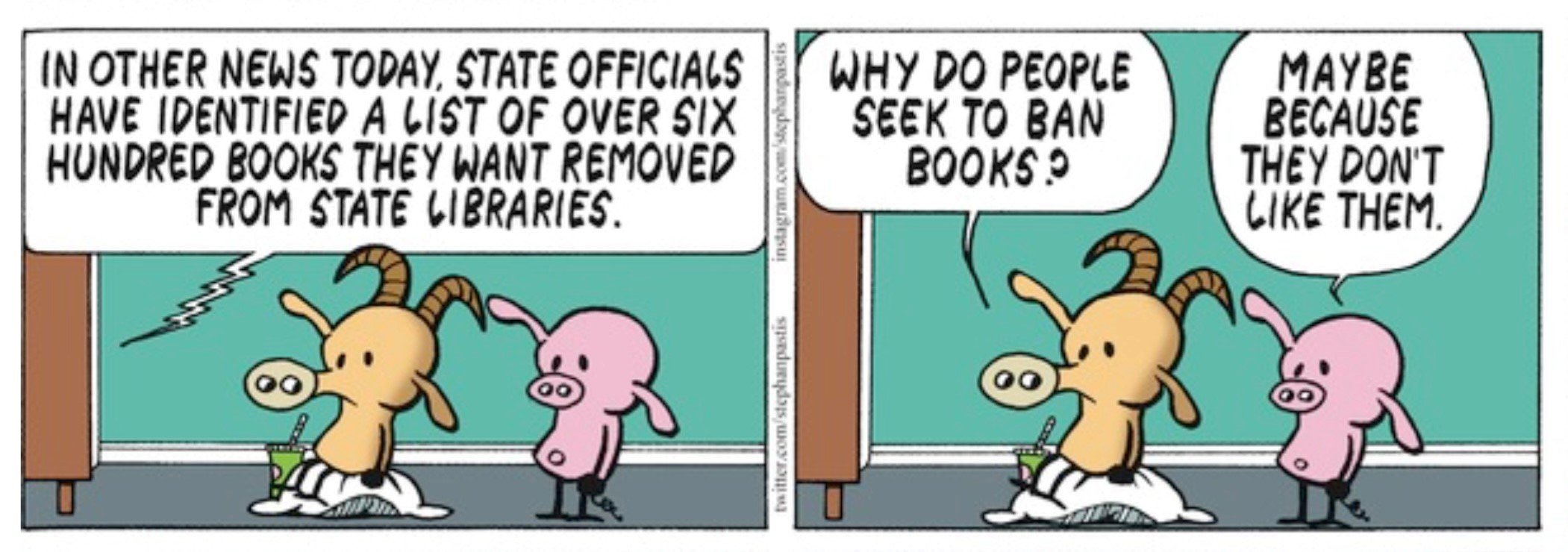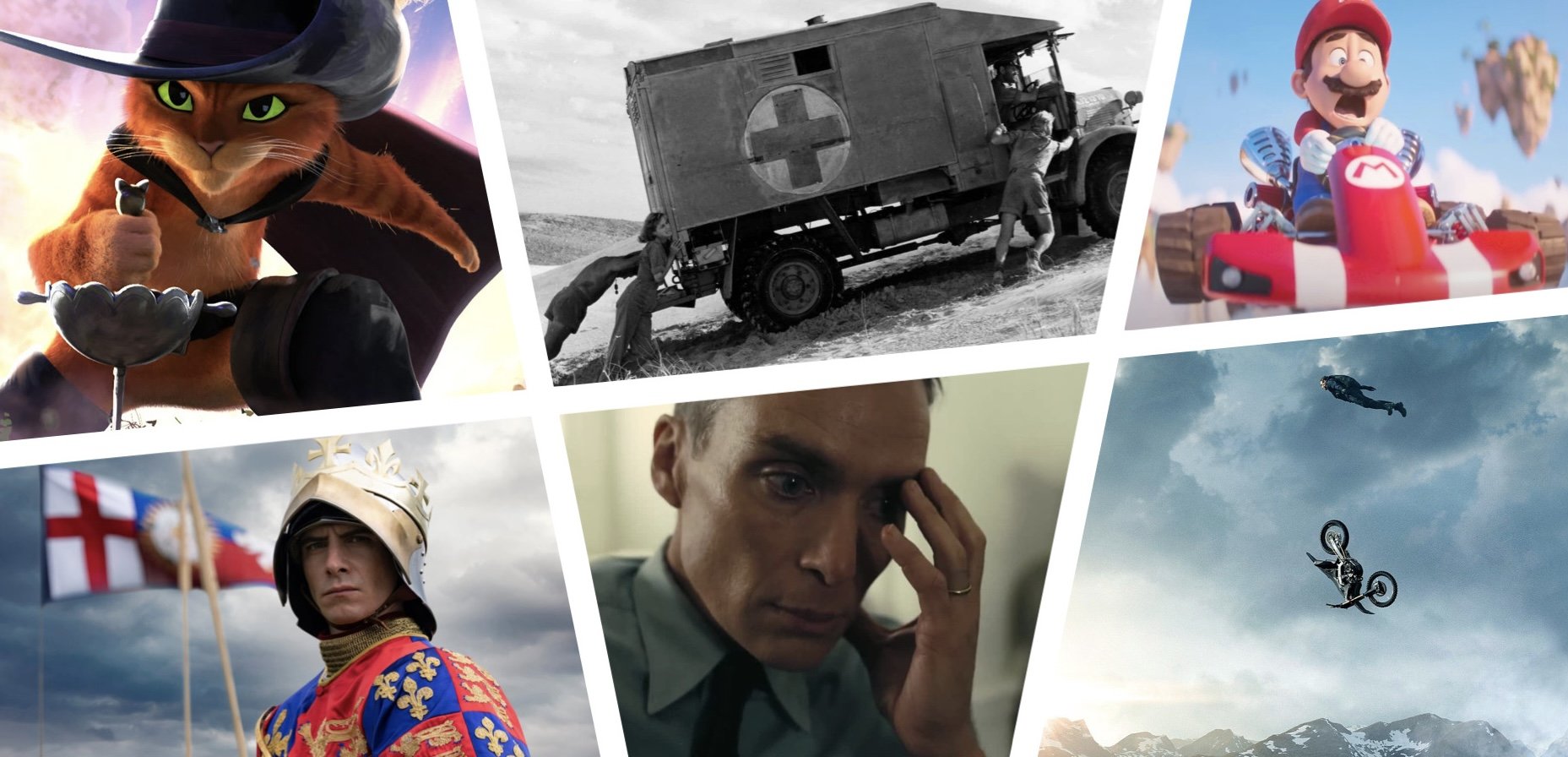Yesterday and today I got to make my first visits to a brick-and-mortar bookstore in a while, the two Barnes & Noble stores just north of me in Greenville. After Thursday’s post I visited them with the concept of censorship—real censorship which, per Alan Jacobs, most properly “refer[s] to the removal, by some legal or commercial authority, of certain portions of a text or film or recording”—nibbling at the back of my mind.
As I’ve written before, there is a trend of deleting or altering portions of the work of both living and long-dead authors either to meet the demands of social media mobs or to forestall future such mobs. In a post about Agatha Christie and the diluting effect of the reign of Content, I mentioned looking at a copy of one of her books a few years ago and seeing a content warning and an admission that the publisher had changed the book. As I noted then, “I didn’t buy that book. It wasn’t the one Christie wrote.” Since I was back in the bookstore where that anecdote took place, I decided to look into this problem again.
The books in question are recent reprints of Agatha Christie mysteries from Vintage Books, which feature beautiful cover art and type design. The new Vintage edition of Poirot Investigates, a short story collection, was published in 2021 and includes the following special note on the first page, before the reader even reaches the table of contents:
This book was first published in 1925. Like many books of its era, it contains some offensive cultural representations and language that detract—and distract—from the value of the work. Accordingly, editorial changes have been made in a handful of places to remove racist language and depictions, but for the most part this classic work is reproduced as originally published.
This is the note to which I responded, in that blog post, that “For the most part is doing a lot of work there.”
But in the 2023 Vintage edition of Christie’s Poirot novel The Big Four this note has migrated to the smaller print of the copyright page and reads like this:
A Note on the Text: This book was published in 1927 and reflects the attitudes of its time, including outdated cultural representation and language. Minor editorial changes have been made in a few places to remove offensive terms, but for the most part this classic work is reproduced as originally published.
Note the lack of any attempt to make artistic claims regarding allegedly offensive words “detract[ing] and distract[ing]” from “the value of the work,” a crass utilitarian turn of phrase that has rightly disappeared. And the remaining verbiage hedges a bit more: “minor editorial changes” still “have been made,” passively, but there is no charge of “racist language,” just “outdated” and “offensive” terms. But these are tiny improvements. Outdated is the language of chronological snobbery de rigueur, and I think offense should be in the eye of the beholder—and of course Christie’s work has still been altered.
But a note of hope creeps in with the new year. In the brand new 2024 Vintage edition of The Mystery of the Blue Train, the copyright page includes this:
A Note on the Text: This book was published in 1928 and reflects the attitudes of its time. The publisher’s decision to present it as it was originally published is not intended as endorsement of cultural representations or language contained herein.
That’s more like it. While I’d still prefer publishers to leave the texts of dead authors alone and just expect their readers to read like grownups, I greatly appreciate Vintage deciding to publish Christie unexpurgated and owning the decision to do so. No “minor editorial changes” are being made (by whom?) here; the publisher decided. A good strong statement, and one that I hope sets a pattern going forward.
Relatedly, this afternoon I happened upon a Vintage reprint of Raymond Chandler’s Farewell, My Lovely, part of its Black Lizard crime novel series. Vintage has published Chandler for some time, but this was a newish reprint with a foreword by James Ellroy copyrighted 2022. This edition had the following Publisher’s Note facing the copyright page:
Dear Reader,
Thirty years ago Vintage Books acquired Black Lizard, adding some of the greatest crime fiction from the postwar era to a list that already boasted the best noir fiction. The new imprint, Vintage Crime/Black Lizard, published the foremost in crime and noir—books that epitomized the genre as well as those that reshaped it and pushed it in new directions. These are the novels that have been an inspiration to subsequent writers, and modern crime remains in dialogue with them.
While these books are outstanding works in the genre, they are also firmly of the time and place in which they were written. These novels may contain outdated cultural representations and language. We present the works as originally published. We hope that you enjoy discovering, or rediscovering, these classics.
Sincerely,
The Publisher
At first I thought that this was a bit much, with a cringing protest-too-much tone that I didn’t care for, but upon reflection I appreciated the subtle appeal to tradition and continuity within a genre and the firm acknowledgement that every genre has masterworks that deserve to be read and admired. And the ownership of publishing a book as written, even more directly here than in The Mystery of the Blue Train owing to the use of the first person, is most welcome.
So I’m hopeful. A bit, at any rate. All of these examples come from just one publisher, after all.
And, looking elsewhere, there is still much work to be done. William Morrow has just reissued the entire corpus of Ian Fleming Bond novels in rather bland-looking paperbacks with the following at the top of their copyright pages:
This book was written at a time when terms and attitudes which might be considered offensive by modern readers were commonplace. A number of updates have been made in this edition, while keeping as close as possible to the original text and the period in which it is set.
Good: placing the onus of offense on the modern reader. Bad: “updates,” as if Fleming’s carefully crafted stories are a glitchy app from a tech startup run by twenty-year olds. As it happens, whoever bowdlerized the books did a comically unthorough job of it.
I don’t know if this is the start of a reversal or just a lonely temporary reprieve from the madness affecting the publishing industry over the last few years, but I pray it’s the former. It’s worth keeping an eye on and, of course, hoping.

















